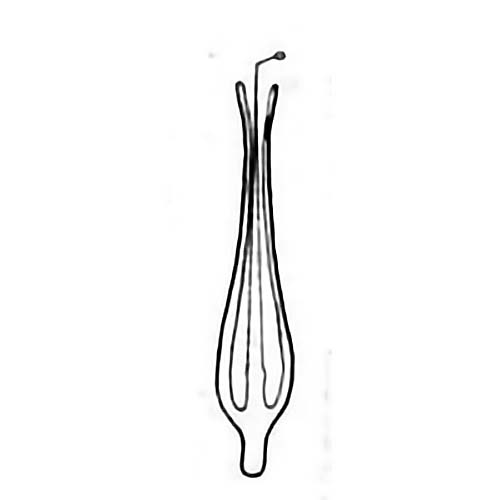Classification of iron springs of different nationalities
101 views · Organized by 秋色 on 2022-02-09
Kirgiz iron spring
The spring frame is 6.5 cm-7 cm long, 2.5 cm wide, 2.5 cm high at the tip of the spring, and slightly curved at the top. When playing, hold the reed frame with the left hand, place the rich end between the teeth, and put the tip of the tip out of the lips, and move the tip of the tip with the right hand to pronounce. In order to obtain different pitches, the left hand often moves the reed frame, the lips are open or idle, and at the same time, the breath is used to produce d1, g1, a1, b1, c2, d2, e2, g2 sound series. The timbre is beautiful, with a metallic sound and a long lingering sound, and the pitch can also be changed by shaking the reed frame when the sound continues. The music includes "Blooming Flowers", "Jujube Mule Horse Colt", "General Song" and so on.Iron Springs in the Northeast
Made of steel, iron or alloys. The length of the spring frame is 10 cm to 13 cm, the length of the conical spring bar in the middle is 14 cm to 17 cm, the tip of the spring is bent forward 45 degrees, and a small ball is placed at the top. The iron springs of the Hezhe people are shaped like the character "D" and decorated with colored lines at both ends. They are usually placed in a fish-shaped wood-carved spring box. The Manchu iron spring is in the shape of a pear, about 20 cm long, and the end of the spring is hung with a red thread. When playing, use the thumb and index finger of the left hand to firmly hold the end of the end, and use the right index finger to strum the ball to make a sound. The exhalation enhances the resonance, with a "Jingjing" metal sound, with a range of five degrees, which can be used to play traditional folk songs and simple music. The iron reed of the Daur people, also known as Kouhu, is 11 cm long and is often used to simulate birdsong.The iron spring of the Xibe tribe
The inner ring is made of a 10 cm long iron bar bent into a pliers. It is shaped as a capital frame, and the spring tongue sandwiched in the middle is made of thin steel sheet or thin steel sheet. The playing method is the same as that of the pincer-shaped iron spring.
Miao people's iron spring thin steel production
10 cm to 12 cm long and 1 cm wide. The head is triangular, the two edges of the waist are rolled inward, and the end is cylindrical. In the middle of the head, there is a sharp tongue-shaped patch, 5 cm long and 3 cm wide. When playing, hold the reed tail with the left hand, place the reed between the two layers, and strum the reed head with the right thumb to make a sound that is soft and delicate. It is often used in youth socializing and love affairs. There are (Gary), (Galu) and (Minor) and so on.Iron springs of the Dai and Jingpo ethnic groups in Dehong, Yunnan
Framed in iron, round, without handle. When playing, it is placed on the teeth, the copper reed tongue is exposed, and the right thumb or index finger springs sound, and the sound is weak. Among them, the Jingpo people have a very small iron spring, only 3 cm in length, which can only be held by teeth when playing. The music is mostly folk songs.Li iron spring
It is made of iron or steel, like a long and narrow triangle, with a long triangular tongue in the middle. The iron springs of the Gaoshan people are also framed with bamboo.Leaf-shaped iron spring of Yi nationality
It is 4 cm to 6 cm long, the tip of the leaf is olive-shaped at one end, and 1 cm at the widest part. A single piece of iron can also be combined into multiple leaf springs according to the pitch, which can be worn together to play. The iron springs used by Yi, Lashenhani, Jinuo and other ethnic groups are mostly composed of three or four or five pieces. There are two types of head end: triangular and semi-circular. The sound is crisp and bright. When playing, multiple iron springs are arranged in a fan shape and placed between the lips, mainly played with the thumb, and sometimes with the index finger or middle finger. A skilled player can make each piece emit its perfect fifth, and on a pair of three-leaf reeds, six notes can be played. Due to the low volume of the iron reeds, they usually come together in twos and threes to listen to each other. When played in a quiet night, the sound is brighter, and it can still be heard from a distance. The overtones are very clear and very beautiful.Involving musical instruments
Iron Reed (Pinyin: Tiě huáng), also known as mouth-holding qin, mouth-playing qin. It is made of copper or iron, and it is also made of bullet casings. The common ones are pincer-shaped, ring-shaped, sword-shaped, leaf-shaped, pear-shaped and so on. The iron fee described in the "Tongdian of the Qing Dynasty" is in the wrong shape. This kind of iron spring is more popular in the Daur and Hezhe ethnic groups in Northeast China, the Kirgiz ethnic group in Xinjiang, the Salar ethnic group in Qinghai, and the Yao ethnic group in Guangxi.
 渝公网安备 50010702504639号
渝公网安备 50010702504639号